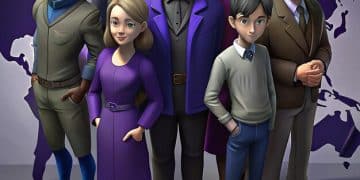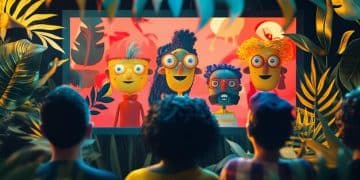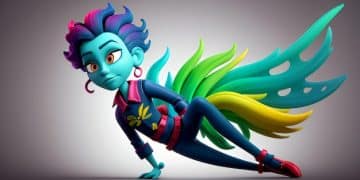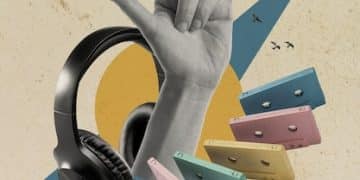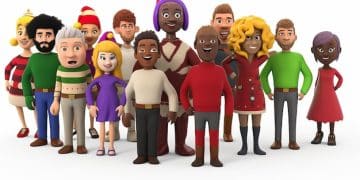Comedy Wardrobe Wonders: Decoding Sitcom Fashion Choices
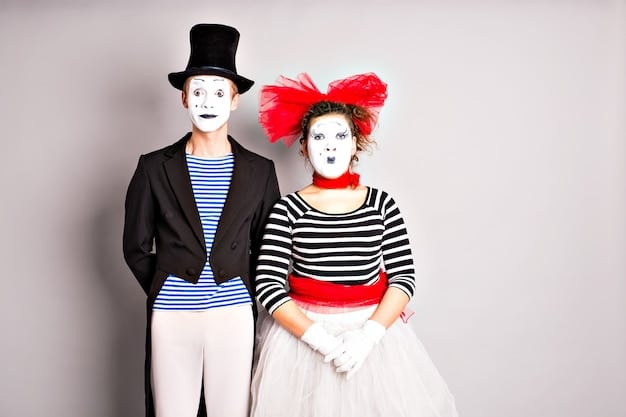
Exploring the wardrobe wonders of comedy series reveals how costume design enhances character development and narrative impact, influencing fashion trends and cultural perceptions.
Ever wondered why the fashion in your favorite comedy series feels so iconic? Comedy Series Wardrobe Wonders: Decoding the Fashion Choices of Your Favorite Sitcom Characters is about understanding how clothing tells a story, shapes characters, and even sparks trends.
The Power of Costume Design in Comedy Series
Costume design in comedy series is more than just dressing characters; it’s a crucial element of storytelling. The outfits characters wear can define their personalities, highlight their quirks, and even foreshadow plot developments. Understanding this aspect enhances the viewing experience, adding depth to the humor and narrative.
Defining Characters Through Clothing
Clothing serves as a visual shorthand, instantly communicating aspects of a character’s identity. A character’s style choices speak volumes about their background, social status, and personal evolution throughout the series.
Creating Visual Gags
Costumes can also be used for comedic effect. Over-the-top outfits, mismatched ensembles, or clothing that’s entirely inappropriate for a situation can amplify the humor and create memorable moments.
- Exaggerated styles for comedic effect
- Mismatched outfits to highlight character quirks
- Clothing that underscores situational irony
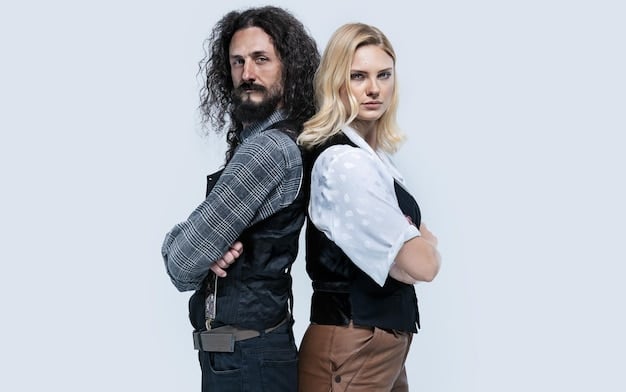
Costume design reinforces character traits and comedic timing. When done well, wardrobe choices contribute significantly to a sitcom’s success and longevity, creating iconic looks that resonate with audiences for years to come.
Iconic Sitcom Styles and Their Impact
Certain sitcoms have not only entertained viewers but have also significantly influenced fashion trends. The styles showcased on these shows often become synonymous with the characters and the era, leaving a lasting impact on popular culture.
“Friends”: The Rachel Effect
The character Rachel Green, played by Jennifer Aniston, became a style icon. Her hairstyles and outfits were widely copied, setting trends for casual, accessible fashion. Many viewers emulated her effortless style, making her a relatable fashion figure.
“Sex and the City”: Carrie Bradshaw’s Bold Choices
Carrie Bradshaw, portrayed by Sarah Jessica Parker, was known for her adventurous and eclectic fashion sense. Her mix-and-match style, designer heels, and tutu skirts inspired viewers to take fashion risks and express their individuality. Carrie’s style reflected her creative personality and fearless approach to life.
- Rachel’s effortless casual style
- Carrie’s adventurous and eclectic fashion
- Impact on trends and viewer emulation
These styles have lasting power influencing modern fashion trends and how viewers perceive character development.
How Wardrobe Enhances Storytelling
Costume design is a powerful tool for enhancing storytelling in comedy series. It can provide insights into character arcs, highlight relationships, and even drive the plot forward. Well-chosen outfits can add layers of meaning and depth.
Visual Cues for Character Arcs
Changes in a character’s wardrobe can signify personal growth or pivotal moments in their storyline. A character adopting a new style might indicate newfound confidence, a change in career, or a shift in their social circle.
Highlighting Relationships
Costumes can be used to visually represent the dynamics between characters. Matching outfits, complementary colors, or contrasting styles can enhance the sense of connection or discord between them.
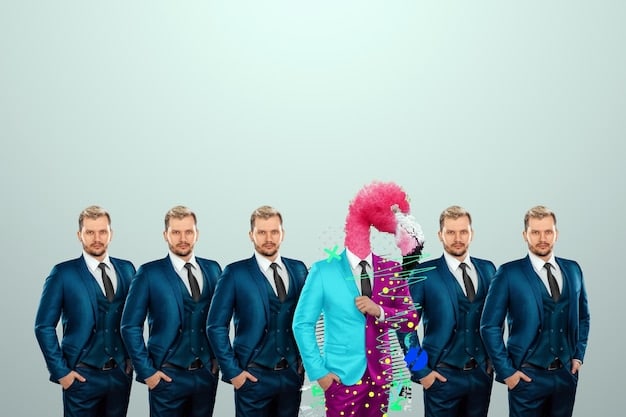
- Wardrobe changes signifying personal growth
- Visual representation of character dynamics
- Clothing driving plot points
Effective costume design enhances both character development and narrative progression, drawing viewers deeper into the sitcom’s world.
The Evolution of Sitcom Fashion Over the Decades
Sitcom fashion has mirrored societal changes and evolving trends over the decades. From the conservative styles of the 1950s to the bold looks of today, each era has brought its unique fashion statements to the small screen.
1950s: The Era of Polished Perfection
Shows like “I Love Lucy” featured characters with impeccably styled hair, dresses, and accessories. The fashion reflected the era’s emphasis on conformity and traditional gender roles. Lucille Ball’s outfits set a standard for polished, feminine style.
1990s: Grunge and Casual Comfort
The 1990s brought a more relaxed approach to sitcom fashion, with shows like “Seinfeld” and “Friends” showcasing comfortable jeans, oversized sweaters, and casual dresses. This reflected the grunge and casual trends of the time.
- Polished perfection of the 1950s
- Relaxed casual comfort of the 1990s
- The bold and eclectic trends of today
Sitcom fashion evolves with the times, mirroring cultural movements and societal shifts, offering a snapshot of each era’s unique style sensibilities.
Behind-the-Scenes: The Costume Designer’s Role
The costume designer plays a crucial role in bringing a comedy series to life. These professionals work closely with the show’s creators, writers, and actors to develop a cohesive and compelling visual identity for each character.
Collaboration and Conceptualization
Costume designers begin by reading scripts, attending meetings, and collaborating with the creative team to understand each character’s background, personality, and story arc. They then develop concept boards and sketches to visualize their ideas.
Sourcing and Budgeting
Once the concepts are approved, costume designers source clothing from a variety of places, including vintage stores, high-end boutiques, and custom-made options. They also manage the budget, ensuring that the costumes are both visually effective and financially feasible.
- Collaboration and conceptualization
- Sourcing and budgeting
- Ensuring actor comfort and character alignment
Costume designers are pivotal in ensuring that the wardrobe not only looks great but also helps tell the story authentically and effectively.
Future Trends in Comedy Series Wardrobe
Looking ahead, the future of comedy series wardrobe design promises to be even more innovative and impactful. Trends such as sustainable fashion, gender-neutral styles, and hyper-personalized looks are likely to shape the on-screen fashion landscape.
Sustainable and Ethical Fashion
With growing awareness of environmental issues, more comedy series are likely to incorporate sustainable and ethically sourced clothing. This trend reflects a broader societal shift toward responsible consumption.
Gender-Neutral and Inclusive Styles
Comedy series are increasingly embracing gender-neutral and inclusive styles, reflecting a move toward greater representation and acceptance. This opens up possibilities for more diverse and creative wardrobe choices.
- Sustainable and ethical fashion integration
- Gender-neutral and inclusive styles gaining prominence
- Hyper-personalized character looks
Emerging trends in sitcom wardrobes will mirror society’s evolving values, influencing how characters are styled and how viewers perceive on-screen fashion.
| Key Takeaway | Brief Description |
|---|---|
| 👗 Character Definition | Wardrobe choices reflect personality and background. |
| ⭐ Trend Influence | Sitcoms often set fashion trends, influencing viewers’ style. |
| 🎬 Storytelling | Costumes enhance narrative and highlight character arcs. |
| 🕰️ Evolution | Sitcom fashion mirrors societal changes and fashion history. |
Frequently Asked Questions
▼
Costumes provide visual cues about a character’s personality, background, and story arc. Clothing choices can quickly establish traits like confidence, wealth, or eccentricity, making characters relatable and memorable.
▼
“Friends” significantly influenced fashion in the 1990s, especially through Jennifer Aniston’s character, Rachel Green. Her hairstyles and accessible outfits became widely emulated by viewers worldwide.
▼
Costume designers collaborate with show creators, writers, and actors to conceptualize and source clothing that fits each character’s narrative. They manage budgets and ensure the wardrobe enhances storytelling effectively.
▼
Changes in a character’s wardrobe can signal personal growth or important turning points in the plot. A new style might indicate newfound confidence, career advancement, or a change in social status.
▼
Future trends likely include sustainable fashion, gender-neutral styles, and hyper-personalized looks. These reflect broader societal values and will influence how characters are styled on screen.
Conclusion
Exploring the costume design in comedy series reveals the significant role wardrobe plays in defining characters, enhancing storytelling, and influencing fashion trends. From iconic looks to subtle cues, fashion in sitcoms is a powerful and often underappreciated element.

